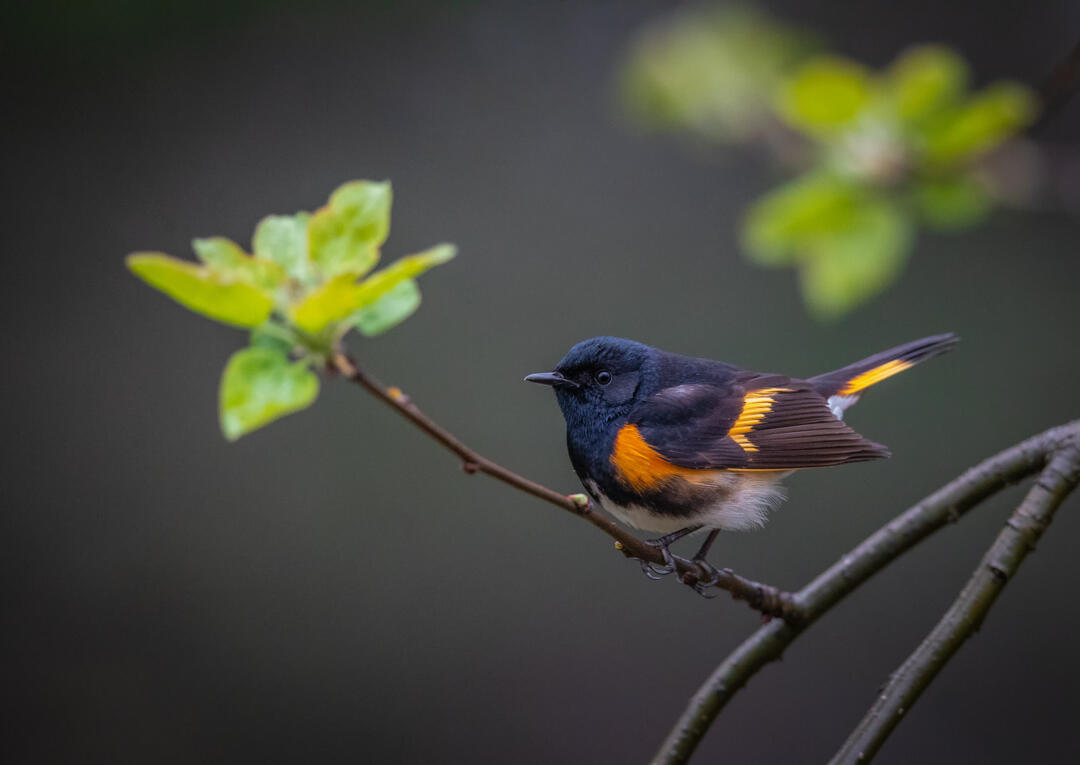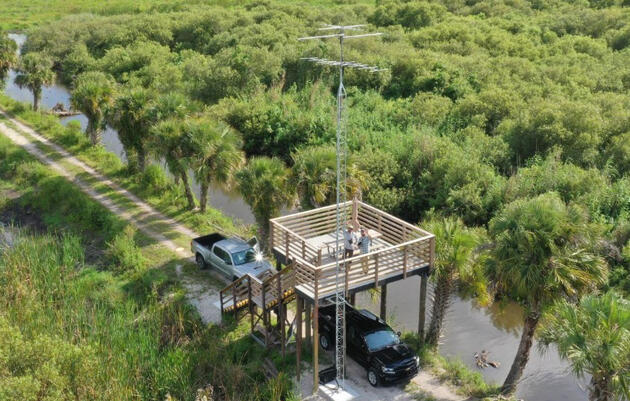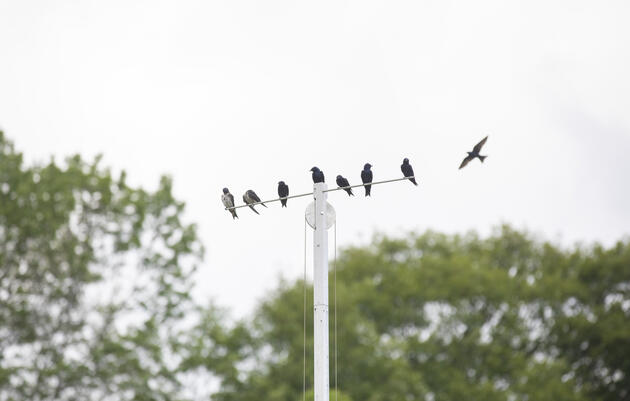Finding a needle in a haystack might be easier than finding an individual bird that flies thousands of miles across oceans and continents during migration. Where it stops, how long it stays, and the time of arrival at its breeding grounds provide valuable clues to bird survival—information that guides land management, habitat conservation, and environmental policy decisions.
Historically, scientists could only guess the answers to those questions, but now the Motus Wildlife Tracking System provides data to researchers in near real-time. Stations installed around the world have receivers that pick up transmissions from tiny tags that scientists carefully apply to migratory birds. If a tagged bird flies within a dozen miles of a Motus station, the receiver records data about the tag, including who applied it, where, and for what purpose.
A Motus station at Corkscrew Swamp Sanctuary found one of those needles in a haystack. On May 9, 2023, the station recorded an American Redstart tagged in Jamaica as part of a long-term study investigating the connection between areas where they spend their winters, spring departure timing, and migration. While some American Redstarts overwinter in South Florida, visitors at Corkscrew Swamp Sanctuary usually see them during spring and fall migration in the old-growth cypress forest.
Bryant Dossman, PhD, Post-Doctoral Fellow in the Department of Biology at Georgetown University, along with his supervisor Dr. Peter Marra, Dean of the Earth Commons Institute at Georgetown, oversees a team at the Font Hill Nature Reserve, in Southwest Jamaica, where American Redstarts have been studied since 1986. Their goal is to better understand bird health, including feather quality, winter habitat preferences, and how they fare in migration.
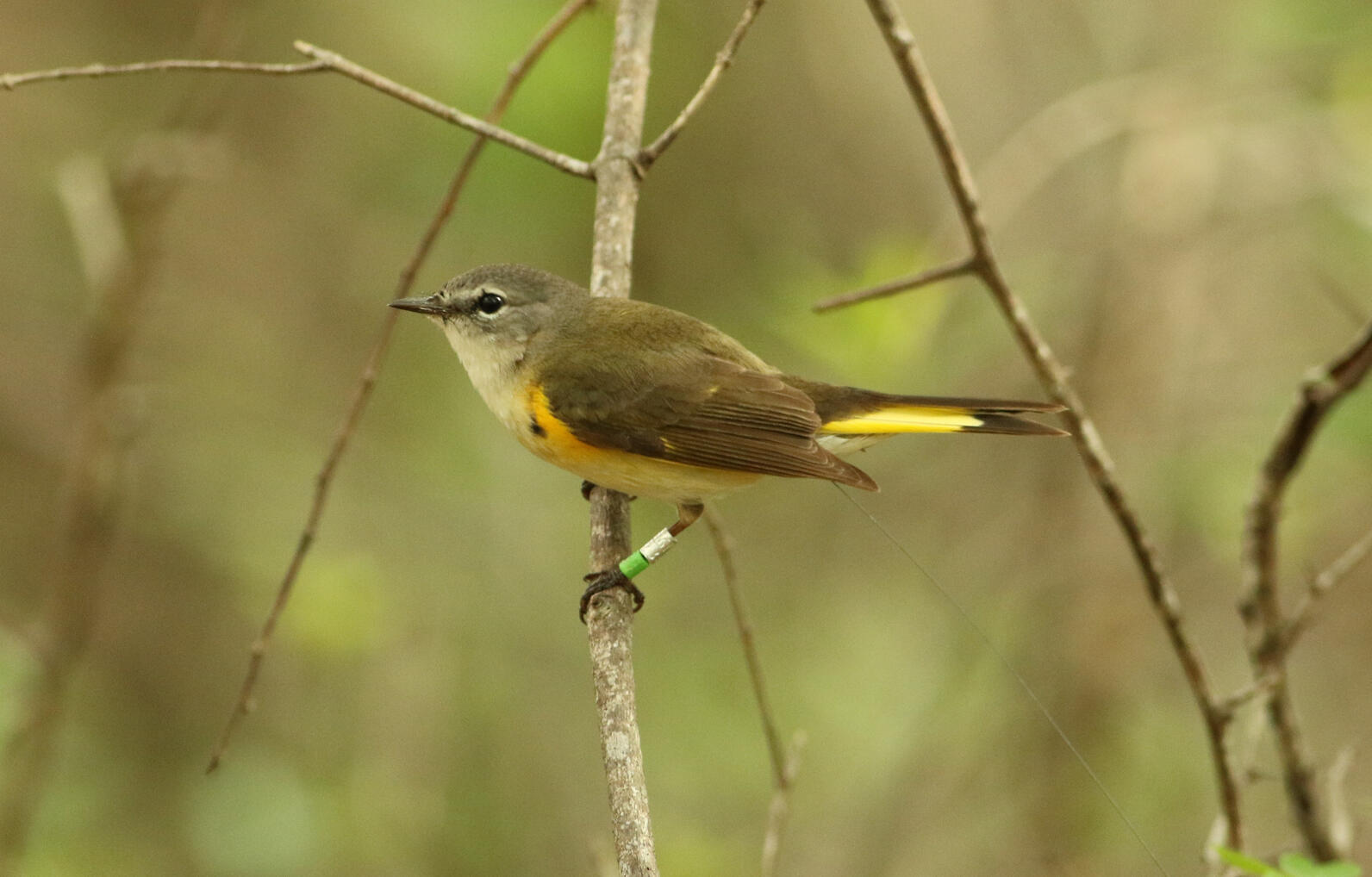
The team is also monitoring long-term patterns of migratory behavior to learn how events and conditions the birds experienced during the winter impacted them in later seasons. The Motus Wildlife Tracking Network provides details on individual birds’ travel patterns and timing.
Dossman confirmed that American Redstart ID# 45660, the bird detected by the Corkscrew station, was a male at least two years of age tagged on March 29, 2023.
“He occupied a territory in the high-quality, black mangrove habitat at our long-term study site at the Font Hill Nature Preserve,” Dossman said.
This bird was one of 115 individuals tagged by Dossman’s team that in addition to redstarts included Ovenbirds, Black-and-white Warblers, and Northern Waterthrush. On May 9, a station at Florida Panther National Wildlife Refuge detected the bird just before it passed by the Corkscrew station. Nine days later, the next location that recorded its passing was at the Odessa Wildlife Station in Wapello, Iowa! According to Dossman, many of their tagged birds breed in the midwestern U.S., so our bird seems to have arrived at its summer home.
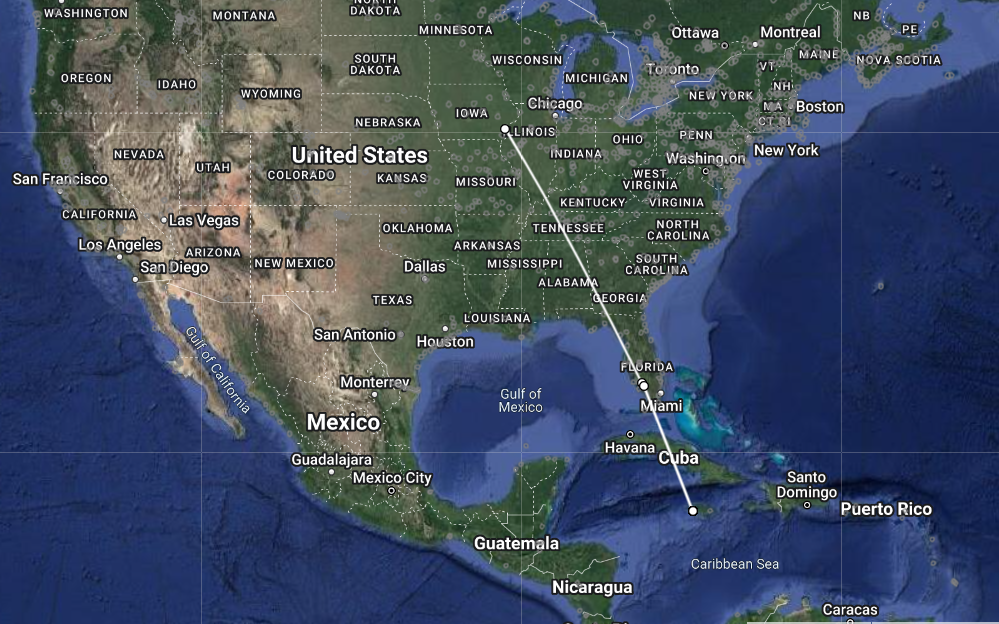
The Motus Wildlife Tracking System is a tremendous tool for researchers. Huge volumes of migration data from the system are also incorporated into the Bird Migration Explorer from Audubon's Migratory Bird Initiative and partners. This online initiative combines the Motus data with data from many other sources to provide a great guide accessible by any bird enthusiast interested in learning about the heroic annual journeys made by over 450 bird species, and the challenges they face along the way.
The data also inform land managers about birds’ seasonal habitat preferences, helping our staff learn more about the role the Sanctuary plays as a stopover point or passage for migratory birds while filling knowledge gaps across the region.


